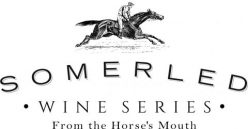… not that you’d ever do that on purpose of course!
But occasionally you may come across a bottle of wine with a “fault”. Let’s take a closer look at what the common faults are and how to identify them.
Oxidation
Oxidation is caused by too much oxygen exposure. It is exactly the same process as when your sliced apple turns brown. Oxidation is the most common wine fault in older wines and is why you shouldn’t keep an open bottle of wine for more than a few days.
Tell-tale signs: Oxidised wines lose their brightness, both in colour and in flavour. Reds turn to a brownish-orange colour, and fresh tastes develop drier, more bitter characteristics. White wines are much more susceptible to oxidation than reds – the higher tannin levels in red wines act as a buffer.
Cork taint
Cork taint or 2,4,6-Trichloroanisole (TCA) is a chemical contaminant. It can be introduced into a wine at any stage during production, but most commonly comes from real cork. TCA can also be present in oak barrels, or the processing lines at the winery.
Tell-tale signs: Dank odour and a taste like wet newspaper, mould or smelly dog. YUMMY! The wine will be fruitless and dominated by these unpleasant flavours. It is the second most common wine fault.
Sulphur Compounds
Sulphur is a complicated issue in wine. As we know sulphur dioxide is added to almost all wine to stabilise it. Another sulphur, dihydrogen sulphide (H2S) results from unhealthy fermentation. It’s also not bad for you but can lead to some nasty aromas.
Tell-tale signs: Rotten egg or burnt rubber – you don’t want to smell anything like this when you sniff your wine.
Secondary Fermentation
Secondary fermentation is a good thing if we’re talking about sparkling wine, but if you find them in a young bottle of red that’s a fault. It usually happens when the wine is accidentally bottled with a few grams of residual sugar which then re-ferments. This most frequently occurs in low-intervention winemaking, where very little (or no) sulphur dioxide is used.
Tell-tale signs: Bubbles in your wine or it sounds like you just opened a bottle of soft drink when you unscrew the cap. There can also be a zippiness on your tongue. Not all secondary fermentation is an accident though. Some winemakers will use it to add a little kick to their wines. It also shouldn’t be confused with malolactic fermentation.
Heat Damage
“Cooking” a bottle of wine happens when it is exposed to too much heat… think about that wine you accidentally left in your car on a 40-degree day!
Tell-tale signs: The wine smells jammy: sweet, but not in a good way. The smell is somewhat like a wine reduction sauce, mixed with a nutty, brown, roasted sugar-type aroma. Heat damage can often break the seal of the bottle so it can also be accompanied by oxidisation. Make sure you store your wine in a cool place but more importantly ensure it is stored at a consistent temperature.
UV Light Damage
This is the damage that is caused by exposure to excessive UV radiation. It is also known as lightstrike and most commonly occurs when a wine is stored in the sun or near a window.
Tell-tale signs: It can make the wine taste like wet wool. It is most common in delicate white wines (Sparkling, Sauvignon Blanc, etc)
Microbial and Bacterial growth
Many microbes can live in wine, but if one of these colonies becomes too aggressive, it can cause various “off” aromas. In small amounts, these can add appealing complexity. If the colony becomes too vigorous though, these flavours become faults.
Tell-tale signs: Again, there are many other bacteria involved in winemaking. They all impart certain flavours and produce signature wine faults. Think of them like spices, in the right quantities they can add an appealing complexity; too much though and the wine becomes uninteresting. They can have medicinal (think menthol or cough drops), animal (barnyard, mushroom), or acetic (vinegar) flavours that at high levels, can be pretty awful!
When is a fault not a fault…?
Some wine “faults” aren’t actually faults at all. This is where picking true faults can get tricky, but once we’re finished here, you’ll be an expert!
Volatile Acidity (acetic acid)
This can be one of the most common wine faults, known as vinegar taint, but it is also a tool used by some high-quality winemakers to develop complexity in their flavour profiles.
Cast your mind back to this post, where I explain what Rob means when he talks about those “estery Penfolds-esque characters” in his Shiraz. It all comes down to a delicate balance.
Tartrate Crystals
These are mineral precipitates that form out of unfiltered, high mineral wines. They are little crystals sitting on the bottom of older bottles. They will cause you no harm. Just decant the wine leaving the sediment in the bottle.
Herbal Aromas
Herbal aromas are typical parts of certain varietally-specific flavour profiles that can smell of grass, eucalyptus, or asparagus. To new or unfamiliar wine drinkers, these aromas can seem similar to sulphur or microbial wine faults.
Heads up…
In a few weeks, I’ll be interviewing Rob for a special post in honour of his 50 vintages!! Do you have any questions you would like me to ask him on your behalf? Send them through in the comments below.
